Edge End in Great Harwood lies in the lee of a hill, close to the former moor and grazing grounds of the town. Today there is a modern housing estate, a former farmhouse dating from the time of enclosure in the eighteenth century, and some terraced cottages and terraced houses built in the nineteenth century. Standing at the end of the row of terraced houses is an old cottage now called, suitably, Edge End Cottage.
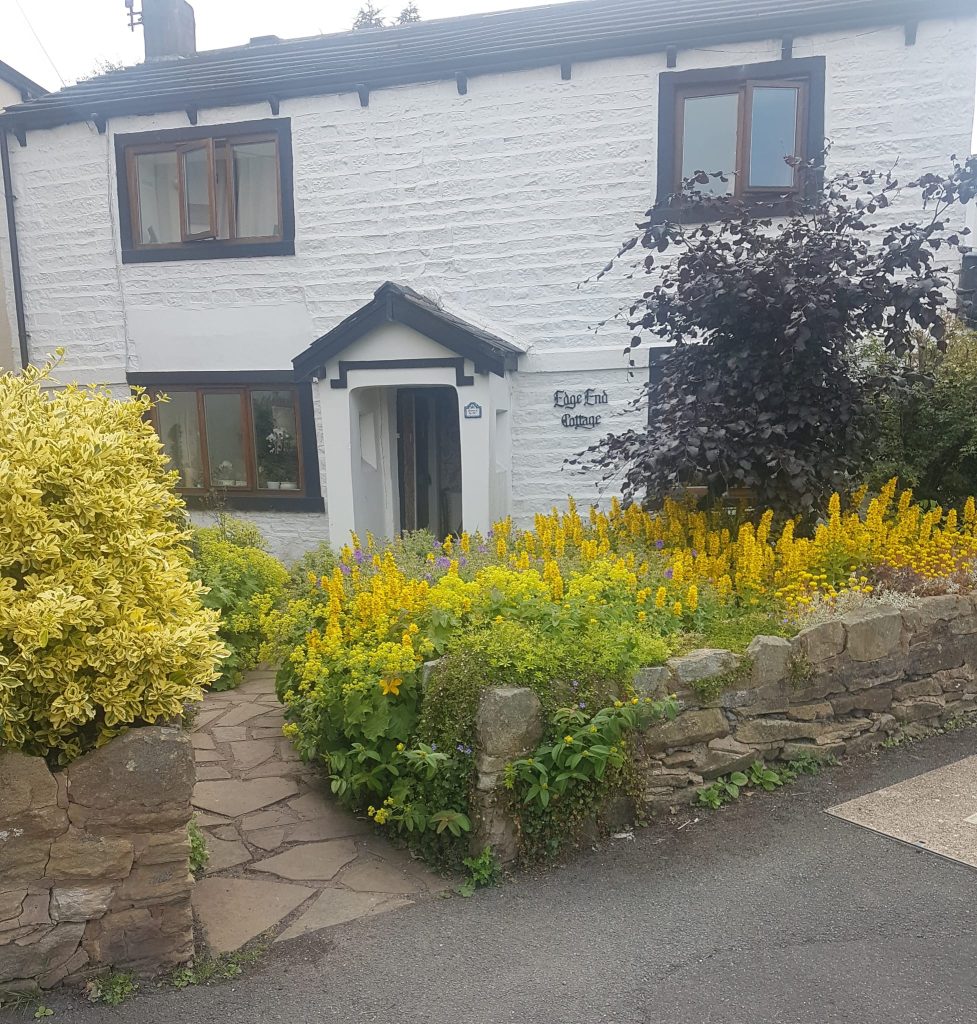
Figure 1 Edge End Cottage
The first mentions of Edge End are in the parish registers of Saint Bartholomew’s church and show that people were living in the area from at least the early 1700s, and it is probable that they were before then too – the early parish registers only rarely mentioned places before that time. A plan made when the enclosure agreements were formalised in 1762 shows that several closes of land, roughly corresponding to the extent of the modern Edge Side estate, were marked as ‘anciently enclosed land’ and that this land was Nowell land. Great Harwood was a manor of two parts: two thirds belonged to the Heskeths of Rufford, the other third to the Nowells of Read. This was the situation until the Nowells sold off their estate in the 1770s and the Heskeths in 1819. The plan also shows a wonderfully detailed depiction of a house on the land where the old farmhouse used to stand, and which was demolished in the mid twentieth century.
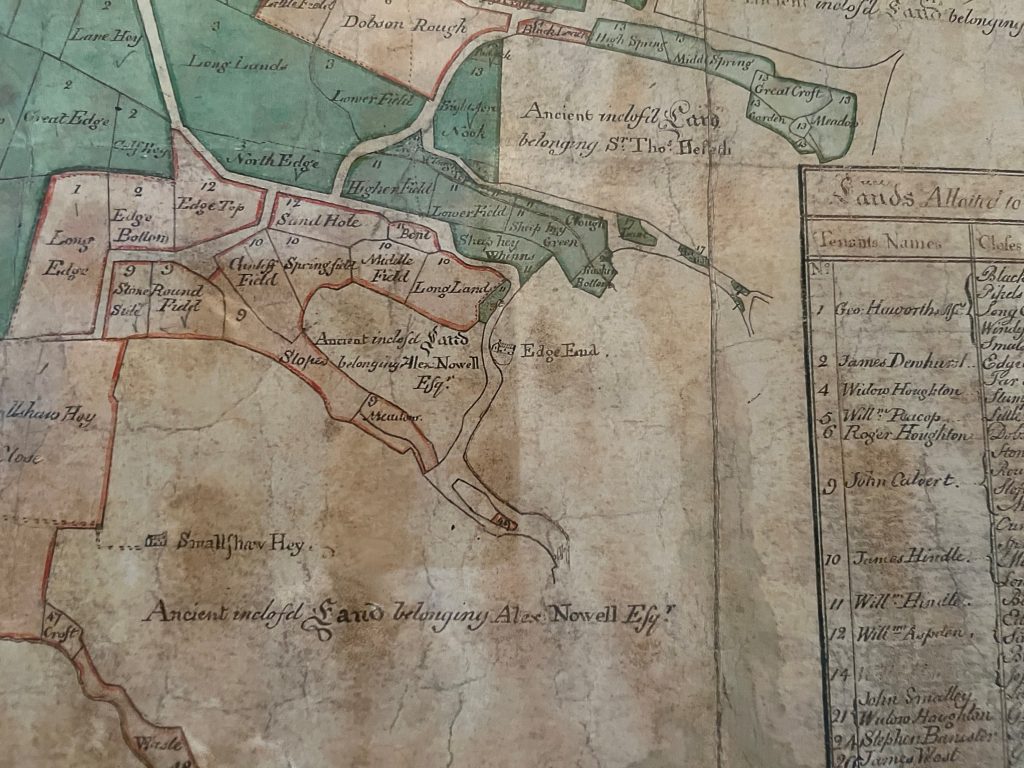
Figure 2 Enclosure Plan 1762
The first event recorded in the parish register for people who lived at Edge End is that of the burial of Ellin Morris in 1731, wife of Richard Morris. However, James Hindle is the first individual we know to have been the tenant of the tenement, during the middle of the eighteenth century. The plan of the common lands, which were enclosed from 1724, listed all the fields that were enclosed and their tenants; from 1741 James Hindle was enclosing the common lands adjacent to the house at Edge End on the plan. These were Cunliffe Field, Spring Field, Middle Field, and Long Lands. A small piece of land adjoining these fields to the east was marked as ‘ancient enclosed land’ and this is where Edge End Cottage came to be built some time later. We know that James lived at Edge End because when his children were baptised that is where he was said to be living: Ann in 1741, Betty in 1743, Sarah in 1746 and Margaret in 1749.
It isn’t clear when James Hindle left the house at Edge End, but when a John Mercer was buried in 1756 he was said to be of Edge End. This John Mercer was a descendent of the Mercer family who had lived at Cowden in Great Harwood since at least the late 1500s, and from the late 1600s some of the family at Squires farm. John Mercer granted the tenancy of Squires to his son Edward before he died and in his will he left the tenancy of Edge End to his daughter Elizabeth.
The Will of John Marcer 1757
Whereas I John Marcer of Great Harwood in the County of Lancaster, Yeoman, being of sound and perfect mind and memory and mindfull of my mortality and that it is appointed for all men once to dye do settle and order my effects real and personall as hereafter follows. Whereas I am Lawfully seized and possessed of and in one Messuage or Tenement whereon I now dwell and inhabit which I give and devise unto My Daughter Elizabeth to be at her disposal. And also for and in consideracion of the natural love and affection which I have and do bear unto her and for her support and mentainance and livelyhood have given granted and confirmed unto my said Daughter all and singular my Goods Chattellls estate and Leases and personal Estate whatsoever in whose hands custody or possession they be within the Kingdom of Great Britain. To have hold and enjoy the same to the only proper use and behoose of my Said Daughter her executors administrators and assigns for ever. And whereas my Son Edward Marcer I have settled an Estate or Tenement on him called Squires Situate in Harwood afforesaid, and do further give and bequeath unto him the sum of one Shilling it being the last part of his legacy. And whereas my wife Mary Marcer being at present absent but having a Catalogue of some goods which I allow her to be at her disposal. Lastly I appoint my said Daughter Elizabeth the whole Executrix of this my last will and Testament the Twenty Third Day of July in the Thirtieth year of his Majesties Reigne and in the year of our Lord 1756.
Sealed signed published John Marcer
and declared in the sight and
presence of us
Ezra Riley
James Noblet
William X Wilkinson
(his mark)
December 29th 1757
Elizabeth Hindle the within named sole Executrix took the Oath of an Extrix. in common form before me
Amos Aspden Surr:
Value Under £20
John Mercer’s daughter Elizabeth had married a Thomas Hindle of Simonstone in 1737. They continued to live at Simonstone after their marriage and the tenancy of Edge End passed to her brother Edward Mercer. A survey of Nowell lands taken in 1765 lists Edward as having the fields taken from Harwood Moor which had been added to the Edge End tenement, as well as land near to Dewhurst, or as it was sometimes known, Deanhurst near Dean Brook and Smalley Thorn. The parish register records that Alice, wife of Edward Mercer, was living at Edge End when she died in 1766 but it isn’t possible to say with confidence when Edward Mercer died.
From 1770 the Nowell estate was put up for sale, but a Trappes Lomax document lists tenements that were sold before that time, and the farm at Edge End was among those sold, to a Robert Calvert. Robert had one child, Ellen, and she married a James Procter in 1759. James and Ellen Procter inherited the Edge End tenement and sometime around 1807 they allowed Martha Heys to build a cottage on part of their land, formalising the arrangement in 1813. This cottage was to become Edge End Cottage.
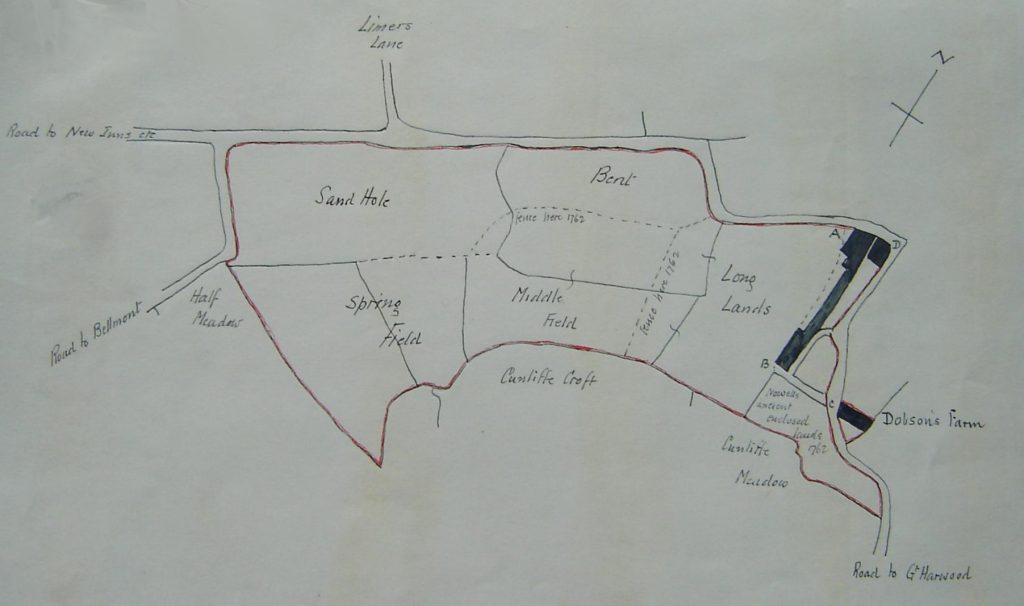
Figure 3 Plan of Dobsons Farm Lands
Hidden from view to the casual passerby because of the porch, Edge End Cottage has a datestone above the front door reading ‘Erected by Martha Heyes 1807’. It was unusual for a woman to have her name, and hers alone, on the datestone of a building. Investigations showed the reasons that Martha was privileged in this way reveal a sad story.
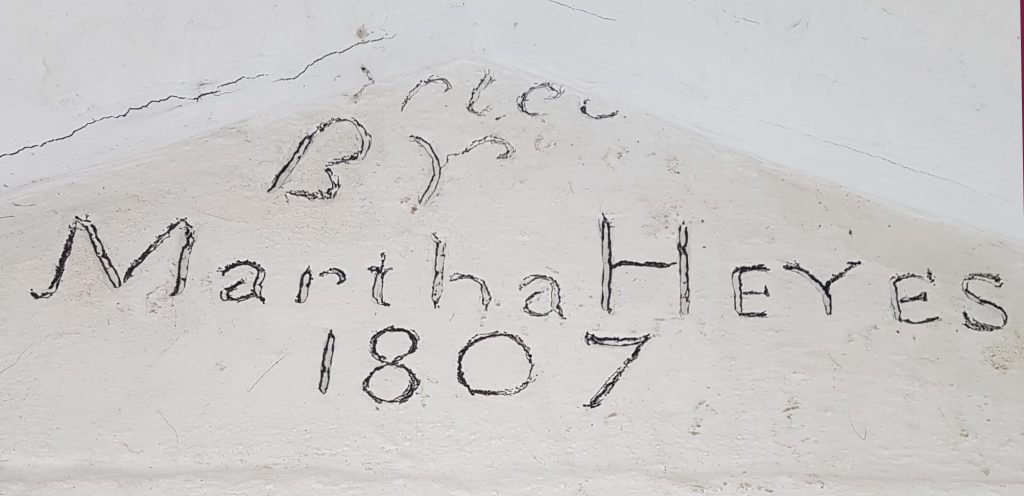
Figure 4 Datestone at Edge End Cottage: Erected by Martha Heyes 1807
Martha Heys was born Martha Hindle, daughter of Robert Hindle, who was an excise officer, and Sarah his wife. Sarah herself was the daughter of William and Martha Mercer. There is no record of the baptisms of either Martha or her brother Thomas in the parish registers of Great Harwood as it is highly likely that the family were Baptists; the baptisms of her cousins Jeffery Taylor and two of his sisters are also not listed and Jeffery himself had his first two children recorded in Baptist documents. There are no earlier surviving documents that may have recorded the births of the children of Robert Hindle and Sarah. Robert Hindle and Sarah married in 1772 and Sarah died in 1776 so Martha and Thomas would be born in the years between. Robert Hindle moved out of Great Harwood and married again, and it appears that Martha and her brother Thomas were brought up by their Mercer grandparents, along with her Taylor cousins, at the Mercer farm at Lower Fold in Great Harwood.
Not far from the Edge End tenement was Belmount, a farm created by enclosure and the home of John Heys and his family, who originally came from Oswaldtwistle. Martha Hindle married their son John Heys in 1791, her cousin Jeffery Taylor having married John’s sister Ann in 1788. It isn’t known where Martha and John Heys lived after they married; when their children were born the residence was just given as Harwood, but it is possible they lived at or near Belmount farm. Thomas was born in 1792, Susanna in 1793, Sarah in 1795 and Mary in 1797.
Tragedy struck the Heys family in 1798, firstly Martha’s husband John died in February that year, aged only 28, followed in March by their daughter Sarah and in May by John Heys senior. The following year in February it is recorded that the Widow Heays buried her daughter Mary, aged just fourteen months. The cause of death for any of the family isn’t known but typhus, measles and influenza were rife in these years. Martha was better placed than many other women in her position may have been in similar circumstances; John Heys senior had been a man of some substance and although the tenant at Belmount he had property in both Accrington and Blackburn and Thomas, Martha’s son, inherited some of these properties. Neither Thomas, nor his children, were mentioned in the will of John Heys senior, but the legacy left to Thomas was mentioned by him in his own will and had probably been settled upon him before the death of his father. Thomas did not survive his mother, he died in 1814, his last surviving sister Susanna having predeceased him in 1809, leaving Martha a childless widow.
In his will Thomas, who called himself a gentleman, left his mother Martha seven copyhold cottages at Lower Fold in Accrington Old Hold, inherited from his father. To his uncle Thomas Hindle, brother of Martha, he left the leasehold of two cottages and a small garden at ‘Hedge End’ in Great Harwood, occupied by his mother and a Lawrence Hindle. It seems that although built as one cottage very soon after it was built it was converted into two dwellings. The rest of his estate he left to his mother.
The family of Jeffery Taylor, cousin of John Heys, were closely associated with Belmount, Higher Edge End farm and the row of cottages at Edge End (also known as Clinkum) until the late 1800s and may have been why Martha decided to build her house in that area. Although the datestone over the cottage says it was built in 1807 it wasn’t until 1813 that the legal document recording her ownership was made.
Demise
Between James Procter of Billington, yeoman, and Ellen his wife, only daughter and heiress of Robert Calvert late of Great Harwood, yeoman deceased and Richard Procter of Great Harwood aforesaid yeoman, only son of James Procter and Ellen his wife of the one part and Martha Heys of Great Harwood aforesaid widow and Thomas Heys her son also of the same place yeoman of the other part for yearly rent covenants and agreements.
All that plot piece or parcel of land or ground situate lying and being on the East side of a certain close or field situate in Great Harwood aforesaid called the croft containing in length on the East side thereof adjoining to a certain Lande called the old Lane nine yards and a half, on the south side thereof along the said close of ground [space] yards , on the west side thereof [space] yards, on the north side thereof [space] yards and which said plot of Ground contains in the whole two hundred and thirty four square yards superficial measure, as the same is now walled in and fenced off And also all that messuage cottage or dwellinghouse lately erected and built upon part of the said plot of ground hereby demised with its appurtenances, which said cottage or dwellinghouse garden and premises are now in the occupation of the said Martha Heys Together with all and singular ways paths passages water watercourses [fold in document] advantages and appurtenances whatsoever to the said premises belonging or in any wise appertaining To have and to hold the said plot piece or parcel of land or ground messuage cottage or dwellinghouse lately erected and [fold in document] before mentioned to be hereby demised with the appurtenances unto the said Martha Heys shall so long live Yeilding and Paying therefore yearly and every years during the term of her natural life unto the said James Procter and Ellen Procter and unto the survivor of them his or her executors administrators or assigns during the term of his or her natural life the clear yearly rent or sum of one pound nine shillings and three pence.
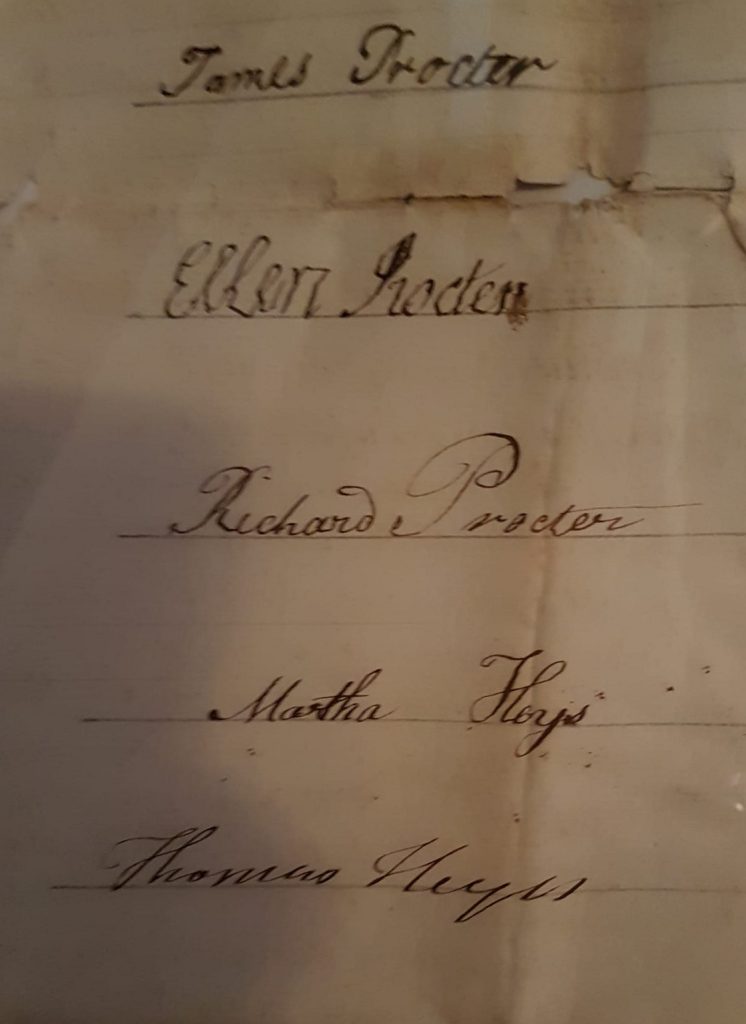
Figure 5 Signatures on demise of property
There is a gap in records relating to Edge End Cottage from after the death of Thomas Heys in 1814 until the census of 1841. In that census the head of household of the last house listed at Edge End before the listing for Stopes begins (near to the now Commercial public house), is John Moore, a shoemaker – and his wife Martha. No other houses had yet been built on Edge End Road, so this was Edge End Cottage.
Marriage: 27 Jul 1817 St Bartholomew, Great Harwood, Lancashire, England
John Moor – Great Harwood
Martha Hayes – Great Harwood
Witness: James Taylor; W. Bentley
Married by By Licence
Martha died at Edge End in December 1845 and her husband John Moore in February 1848, also at Edge End. The cottage now passed to Martha Sharples and her husband John. Martha Sharples was the daughter of Thomas Hindle and the niece of Martha Moore. Living with Martha Sharples and her husband John in 1841 in Blackburn was Jane Pilkington, aged about 20 and it is to Jane, and a Joseph Pilkington, a wheelwright of Accrington and who was probably her brother, that the cottage passed when Martha Sharples died in 1863. It isn’t clear why the property was left to Jane and Joseph Pilkington, or if there was any sort of family connection to Martha. However, it seems that neither Martha’s husband nor Jane and Joseph Pilkington wished to retain the property and in 1864 they sold the cottages to James Lomax of Clayton Hall.
These are the tenants of numbers one and two Edge End in the various census years, although at times it is difficult to be certain about number two:
| Number One | Number Two | |
|---|---|---|
| 1841 | John and Martha Moore | William Hodgson painter aged about 25 Alice aged about 20 and Ellen aged one. |
| 1851 | Susan Whitaker Widow aged 65 annuitant born in Blackburn living with daughter Betty unmarried aged 35. | Robert Taylor Power loom weaver aged 20 born in Read living with wife Jane aged 22 power loom weaver born in Great Harwood. |
| 1861 | James Ratcliffe Power loom weaver aged 50 born in Blackburn living with wife Jane aged 51 born in Great Harwood nine children and a boarder Mercy E Taylor. | Robert Mitchell Stone mason aged 24 born in Bingley Yorkshire living with wife Elizabeth born in Houghton in Craven aged 30 daughter Alice aged 2 plus a nephew and a visitor. |
| 1871 | James Ratcliffe Still with wife Jane now 5 children a nephew a niece and Mercy Emma Taylor shown as adopted. | James Heyes Widower aged 52 cotton weaver born in Great Harwood living with daughter Elizabeth aged 12. |
| 1881 | James Ratcliffe With Jane and five children although at least two of those are children of their daughter Annice. | James Heyes James now living with son James aged 19 but also a daughter Margaret and her husband George Sagar and children. |
| 1891 | Thomas Parkington a weaver aged 41 born in Blackburn living with wife Elizabeth and 7 children. | Thomas Howarth weaver aged 34 born in Blackburn living with wife Mary and 3 children. |
| 1901 | No entry for 1 Edge End. | James Woodcock Coal hewer aged 57 born in Standish living with daughter Nelly Parkinson aged 10. |
| 1911 | Listed as Heyes Cottage – William Lord Marine store dealer aged 36 born Clayton le Moors with wife Margaret three children a boarder and father Bernard Lord. | (Numbering obscure) |
| 1921 | Thomas Loynd Retired cotton manufacturer aged 74 born in Great Harwood living with son William aged 37 a taxi proprietor. | Clara Green Cotton winder single aged 45 born in Great Harwood. |
| 1939 | Elizabeth Wesley Elementary school teacher divorced born in 1883 living with children Bertam and Joyce. | William Loynd Cotton mill cashier born in 1885 living alone. |
After Martha and her husband John Moore died Martha Sharples let out the houses, as did the Lomax estate after they bought the property in 1864. As with other areas of the town at this time, when new terraces were springing up for the workers in the many mills that were also built in the last half of the nineteenth century, the older housing attracted people from outside the area, as the table above shows.
In 1919 Helen Trappes-Lomax sold the property to Thomas Loynd. Thomas had been a shoemaker at one time, living and plying his trade from numbers five and seven Queen Street. He died in 1923, but the family retained both cottages and in 1939 his daughter Elizabeth, now Elizabeth Wesley, lived at number one with her children and William her brother, a single man, lived at number two.
Sometime between the years 1964 and 1967 the two cottages again became one dwelling house. The house was sold by the heirs of Elizabeth Wesley in the latter year to Roy and Marian Cross, and it was sold as one house, and it remains so today, a pretty and charming cottage.
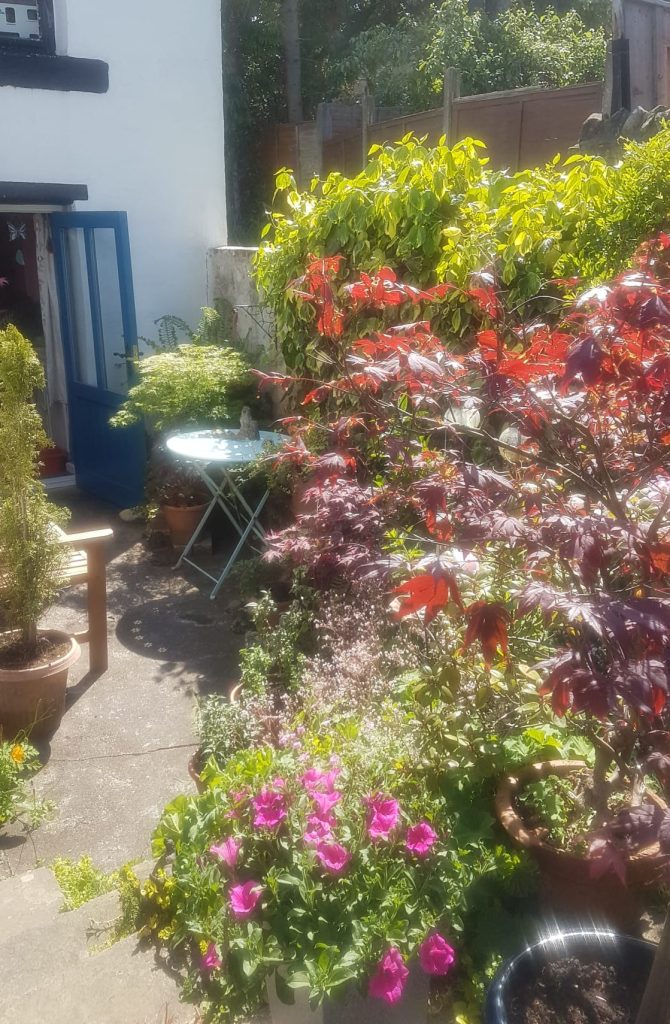
SOURCES AND SELECT BIBLIOGRAPHY
Documentary Sources:
Parish registers accessed via Ancestry.co.uk
Census records accessed via Ancestry.co.uk and Find My Past (1921)
1939 register accessed via Ancestry.co.uk
Probate documents:
Original records at Lancashire Archives.
Maps:
1763 Survey plan of Great Harwood (copy) from private collection of JM Trappes-Lomax.
Manorial records. England. Great Harwood, Lancashire. 1728-1781. Notebook with details of Hesketh and Nowell leases for lives. Trappes-Lomax of Clayton le Moors. DDLX/12/7. Lancashire Archives.
Manorial records. England. Great Harwood, Lancashire. C. 1774. Great Harwood and Harwood Moor. Trappes-Lomax of Clayton le Moors. DDLX/9/1. Lancashire Archives.
Property deeds and documents for Edge End Cottage with kind permission of current owners.
